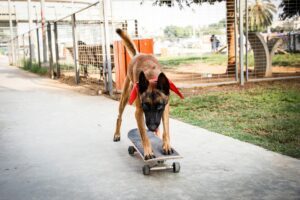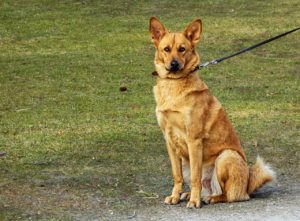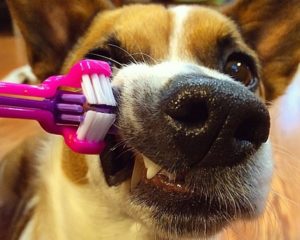Do you enjoy going for a massage after a stressful day? There are not many people who would say ‘no’ to a SPA day. Well, chances are your doggy will enjoy a dog SPA day as well!

But first to note, there are many groomers out there who call themselves a SPA, offering nothing but grooming services, but there are actual dog SPAs out there, run by licensed veterinary professionals of course. And we made you a list of all sorts of enjoyable treatments you can pamper your furry companion with. The rules of these treatments is the same for us and our canine companions: they can be used both for recovery and injury prevention purposes. What we want to achieve is enhanced quality of life.
Canine Healing Treatments – Modern Vs. Ancient Medicine
The advances of modern medicine have improved the quality and lengthened the life spans of both humans and their beloved dogs. But even though medical advancements are extraordinary, many veterinarians are turning to ancient medicine in an effort to help their patients. Centuries-old techniques have been shown to enhance traditional veterinary medicine and further benefit the wellbeing of the canine community. And dog SPAs have plenty of those techniques to choose from! Needless to say, a licensed professional is supposed to be performing the treatment and for this reason, they are often vets themselves.
Physical Therapy
Physical therapy for dogs adapts the techniques which are used for humans in order to reduce the animal’s pain and improve movement. The spectre of techniques is endless, but the aim is the same: to increase the function and mobility of joints and muscles. It is more than advisable to resort to canine physical therapy to enhance the recovery from any injury, surgical procedure or simply age-related symptoms. If you want your furry friend to feel better and slow down the process of any age-degenerating diseases, there’s no harm in learning some techniques from a professional as they can only optimise your dog’s health and wellbeing.
How do you know if your dog needs it?
- He or she is recovering from a surgery
- Your dog suffered from soft tissue injuries
- Arthritis
- Neurological diseases
- Difficulties getting up after a nap
- Hesitation when it comes to climbing stairs
- Your walking buddy is no longer eager to go for walks and only tolerates short distances
- Animals always show symptoms when they are in pain: either by voice, decreased appetite or taking longer naps
Hydrotherapy
Basically, this form of therapy involves functional exercises that involve the whole body, using dynamic movements that mimic actions that are part of a dog’s normal daily routine with water adding further resistance. For example, sea water has been known for its benefits when it comes to treatment and prevention of leg injuries in horses. Today, you will see a pool that is quite a lot smaller than a human swimming pool and is heated. Also, there can be additional elements like jets to add further resistance and make the dog invest more effort to perform the movement.
Myofascial Release
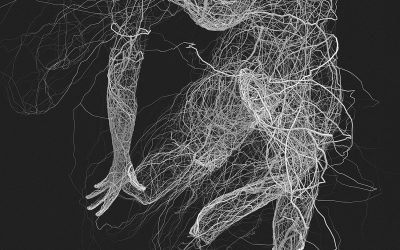
Now, this technique is known when it comes to horses as unfortunately, humans need them to win races. It is such a shame as this is a very potent therapy and its benefits have been widely known for humans. Fascia has been neglected for a very long time and although human medicine is catching up, canine medicine is a lot behind. Fascia influences EVERYTHING in the body. It is a ‘layer’ that wraps every organ, muscle and bone and when it becomes restricted it becomes dysfunctional. Here’s a simple example: a stress on one spot (i.e. back) makes a tangle, which in turn ‘pulls’ the fascia web of your whole body. And just like us, dogs can often suffer from Myofascial Pain.
So what is FASCIA?
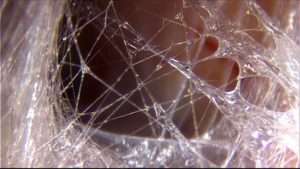
This thin layer of web that surrounds all of our and our dogs’ organs, muscles and tissues is what helps create a mobile, flexible and resilient body. Its slippery and wet nature is what enables muscles to move without too much friction, allowing them to work more efficiently. Fascia also acts as the body’s emergency break system due to its strong structure, therefore ‘absorbing trauma’ leading to myofascial pain.
What is Myofascial Pain Syndrome?
It is a condition which affects the body’s 3D Network of Fascia, a multi dimensional, electricity field generating, ubiquitous tissue that is now becoming considered to be a 2nd Nervous System and is potentially THE most important communication system for the body. Since fascia connects muscle, bone tendons and organs, when there is chronic tension, this fascia can become tight. It squeezes the muscle in the same way you would squeeze a sponge in your hand. This decreases blood flow and nerve impulses to the muscles, and over long periods of time, the muscle is starved for blood, oxygen, and food and become stressed, leading to pain and lack of mobility.
A myofascial ‘tangle’ causes pain, stiffness and reduced mobility but can also mimic the symptoms of other diseases such as Arthritis. This is because fascia is known to hold patterns of emotional memory. For example, when a dog has a traumatic experience: bereavement, a new home or an attack, they can all produce myofascial issues that you can observe through anxiety, pain and restricted movement. Fascia helps to support, protect and separate tissues of the body like bone and muscle and this is why it is immediately able to affect every cell in the body.Painkillers and traditional NSAIDS often don’t improve dogs with myofascial pain so these conditions need a ‘healing hand’. Massage that encompasses myofascial release can indeed produce significant and profound changes in your dog.
How do you know if your dog has MPS?
- Skin twitching or flinching
- Yelping when touched in a certain area
- Sore back legs
- Tight skin
- They may grimace or have ‘tickly’ spot around the middle of the back
- Restricted range of motion
- Reluctant to being petted/groomed or handled in general
- Excessively rolling on their back
- Hair flicking up where it hasn’t before
- Sudden nervousness and anxiety
Reasons for Myofascial Pain in dogs include:
- Secondary to Osteoarthritis
- As a result of a strain (tear to a muscle)
- Activities of daily living eg: jumping on/off furniture
- Anything repetitive eg: high energy ball chasing
- ‘Body Slamming’ by other dogs
- Dehydration for dogs that don’t drink much water
- Trigger Points (hyper-irritable and super sensitive spots in the skeletal muscles – you know the feeling when your masseuse targets a spot that brings you relief from pain?). If under stress, these trigger points can cause Myofascial Pain (same like for humans)
- Impact/Trauma
- Some breeds are just more prone i.e. hound types like Belgian Shepherd and English Pointers
- Old age
So if you are able to, please give your dog the gift of a Myofascial release treatment. It is perhaps the dog SPA treatment he will mostly enjoy although all of them will have a blissful after-effect. This is a very gentle form of massage that gently stretches the fascia layer over the muscle to allow better blood flow, oxygenation and energy to the fibers and organs. This fascia relaxation also allows better nerve conduction of neurological impulses which allows the muscle to move better and transmit signals to other nerve fibers. And both dogs and cats love it! Many fall asleep during treatment :)
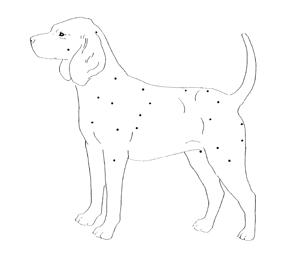
Osteopathy
Osteopathy for animals, so called veterinary osteopathy, is just as effective for dogs as human osteopathy is for humans. The goal is the same, to determine where the problem is and then why it took place. It is especially useful when the dog is not responding to massage and physical therapy.
Moreover, it can do wonders for the following conditions:
- Front/rear leg lameness
- Weakness (slow to get up, difficulty with stairs or jumping on furniture or in the car)
- Knee problems
- Intervertebral disc disease
- Muscle train
- Arthritis and joint pain
- Soft tissue conditions (ligament/tendon sprain)
- Instability
- Urinary incontinence
- Hip dysplasia
- Geriatric dogs – difficulties moving
- Crooked Butt Syndrome – asymmetric movement
- Injury prevention and improving performance (for athletic dogs)
Acupuncture
Acupuncture is a great way to treat dogs with arthritis and joint inflammation. This form of treatment is based on the philosophy that illness is caused by an imbalance of vital energies in the body. The same principles underlines the whole Traditional Chinese Medicine. So, with acupuncture, we do our best to restore this energy balance and promote healing. In other words, help the body heal itself by correcting those imbalances. Acupuncture also stimulates the nervous system and increases the release of anti-inflammatory and pain relieving substances to reduce a dog’s discomfort.
Dogs and needles?
The technique requires the insertion of fine needles into the dog’s body at specified points, called acupuncture points, where nerves and blood vessels converge. These points are located in sites called meridians. Meridians are energy channels that transmit energy throughout the dog’s body. Usually, the dog will feel an immediate ease right after a needle is inserted. So, despite the needles, it will be a dog SPA “experience”. But, there’s no dog who comes relaxed to a clinical setting so if that’s the case, there’s also another way. Similarly, acupressure can be used by simply applying pressure to these acupuncture points. This less invasive technique is also preferred for locations that are hard to reach.
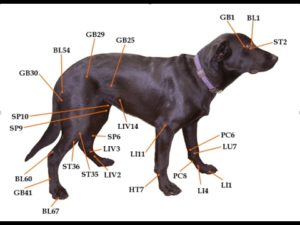
Don’t forget that the combination of old and new medicine is the one that produces the best results!
Please note that all of the above “dog SPA” techniques are good complements to traditional medicine (i.e. anti-inflammatory medications). Traditional medicine remains as the first line of treatment for more serious diseases like cancer and major organ disease. But these techniques are great to speed up your dog’s recovery, prevent any injuries, slow down age-related disease and ease any side-effects of traditional treatments (nausea, soreness, etc.). So, whatever stressful condition your canine friend is struggling with, don’t despair. There’s a lot you can do to ease the pain and hopefully, help your best friend restore optimum health. That is what a dog SPA is essentially about. No offence to groomers, but a SPA is about restoring your optimal health. So treat yourself and your furry best friend with a SPA day!





